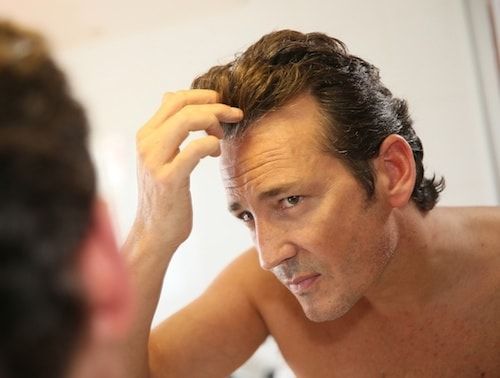Maybe you’ve just started noticing a few more hairs than usual on your pillow each morning. Or, maybe your hairline is creeping back faster than you can say ‘follicular unit extraction’.
No matter how recently you’ve started to lose hair, you may be wondering when is the right time to have a hair transplant.
One thing is for sure – the ‘if I ignore it maybe it will go away’ approach doesn’t work.
You may not need a hair transplant right now (especially when other treatments can slow down or stop hair loss), but the best results come with the right timing. Here’s how to know when it’s time to have a hair transplant.

Who is eligible for a hair transplant?
The first question to ask is whether you’re eligible for a hair transplant in the first place. Hair transplants are mainly a solution for people who suffer from androgenetic alopecia, also known as hereditary pattern baldness.
That’s because some types of hair loss (such as telogen effluvium) are reversible and may even go away on their own, but not androgenetic alopecia. Male pattern baldness is the most common reason for hair loss in men, affecting one in two men over 50 years of age.
It’s important to get your diagnosis right to know if a hair transplant would work for you. What’s also important is to consider whether it’s the right solution for you. Hair loss in and of itself is not dangerous, but if it’s causing emotional strain, a hair transplant may be worth considering.
Age is nothing but a number… or is it?
We often get asked if there’s an age that is too young for a hair transplant.
First of all, a person would have to be of legal age and have their mature hairline in place.
For men, a mature hairline normally sets in place between the ages of 17 and 29. The hairline can creep back by a couple of centimetres but doesn’t recede any further for years to come. This is a normal part of aging, although the hairline may sometimes become uneven, which can be addressed with a hair transplant.
However, for some men, more extensive hair loss can start happening early on. At Gro, we’ve had clients undergo a hair transplant in their early twenties.
You can also be too old for a hair transplant. As we age, hair structure changes and hair tends to become more fine and sparse. There’s no specific age limit, but the donor area may simply not have enough hairs anymore to support a transplant, or the results that can be delivered may not be worth it.
Early bird catches the worm
Generally speaking, the earlier you address hair loss, the better.
First of all, it means the hair transplant will be smaller and therefore cheaper.
Second of all, it means the donor area will give us more to work with, and therefore better results.
The typical tool to assess the extent of male pattern baldness is the Norwood Scale. If your hair is starting to recede in a pattern consistent with androgenetic alopecia, it’s a good idea to speak with a hair loss expert.
Stop or slow down hair loss while you wait
Tackling hair loss doesn’t have to mean a hair transplant right away. You can also stop or slow down hair loss with prescription treatment. That may be all you’ll ever need, or it might help you have a smaller and less expensive hair transplant in the future!
Here at Gro, we offer our clients reGro credit, where all money spent on products and treatments online can be put towards a hair transplant down payment in the future. Provided your subscription with us stays active the entire time, that is.
Book your hair transplant consultation
It’s never too early to book a hair transplant consultation. Even if you’re in the early stages of hair loss, a consultation can help bring clarity to the results that you can expect, as well as the timeframe to address things. Book your consultation with a Gro Hair Growth Specialist today.













